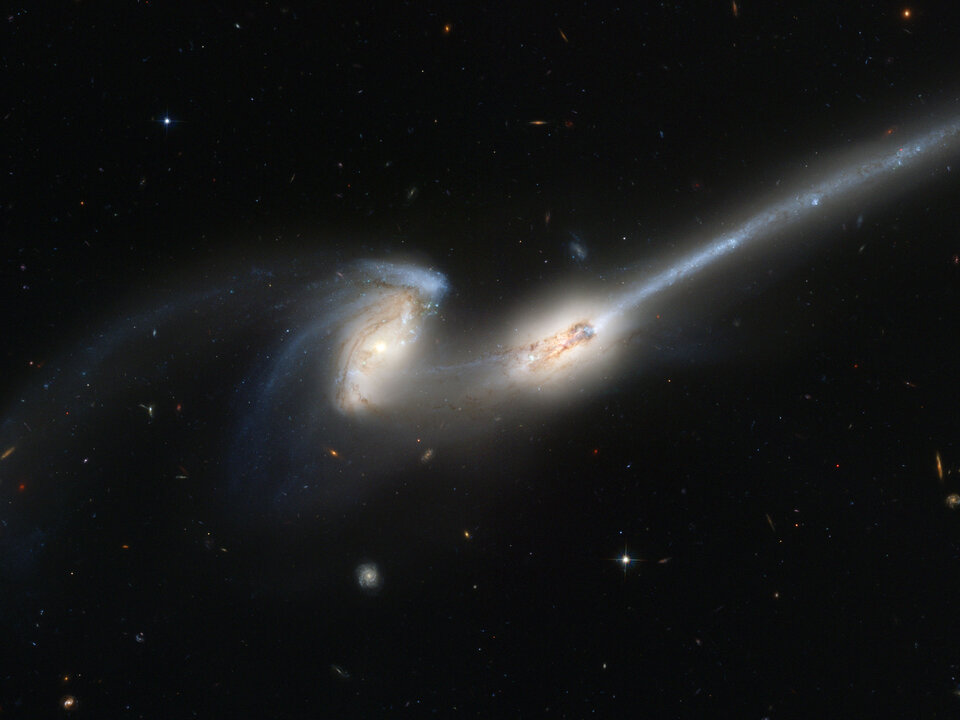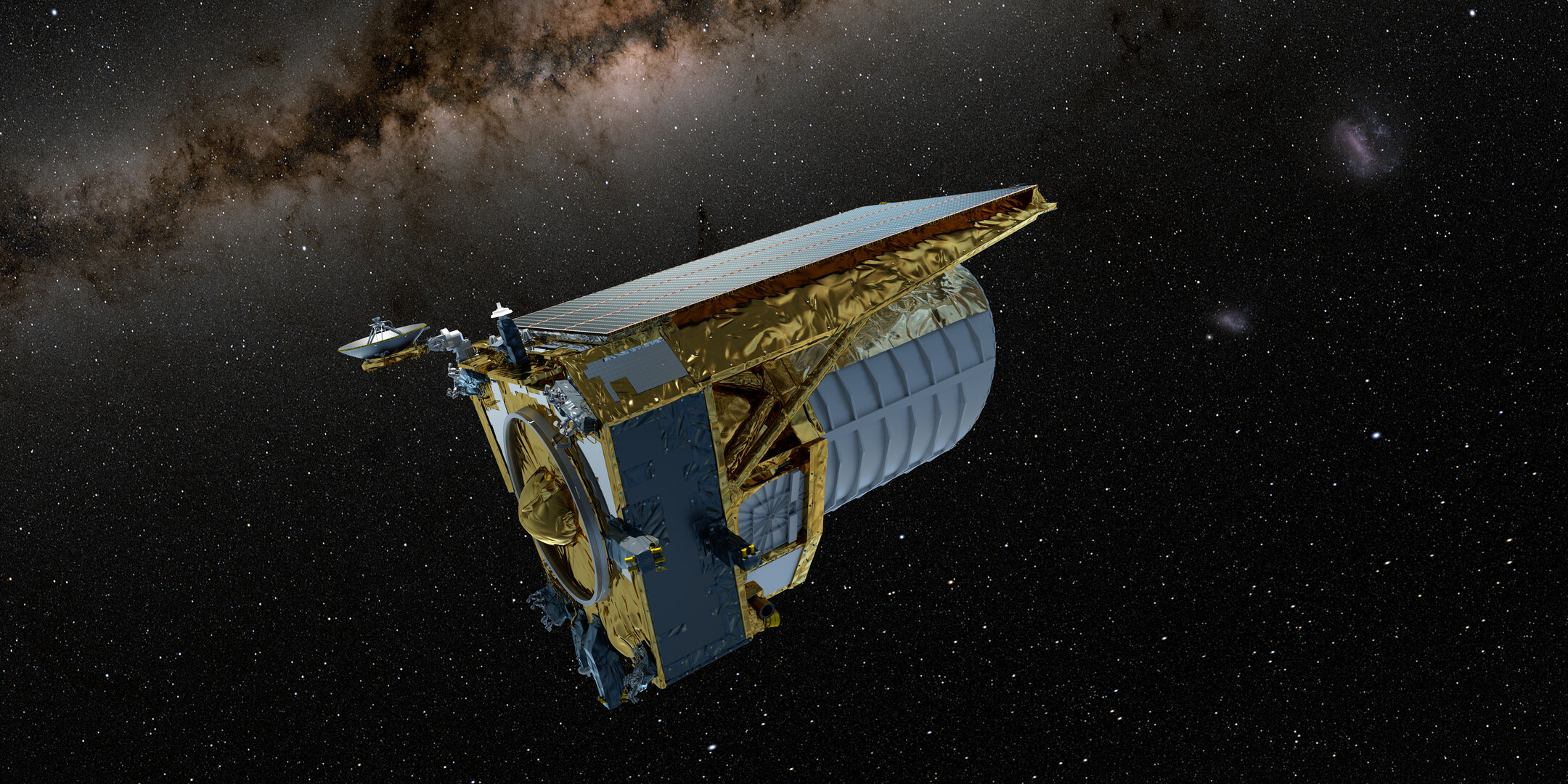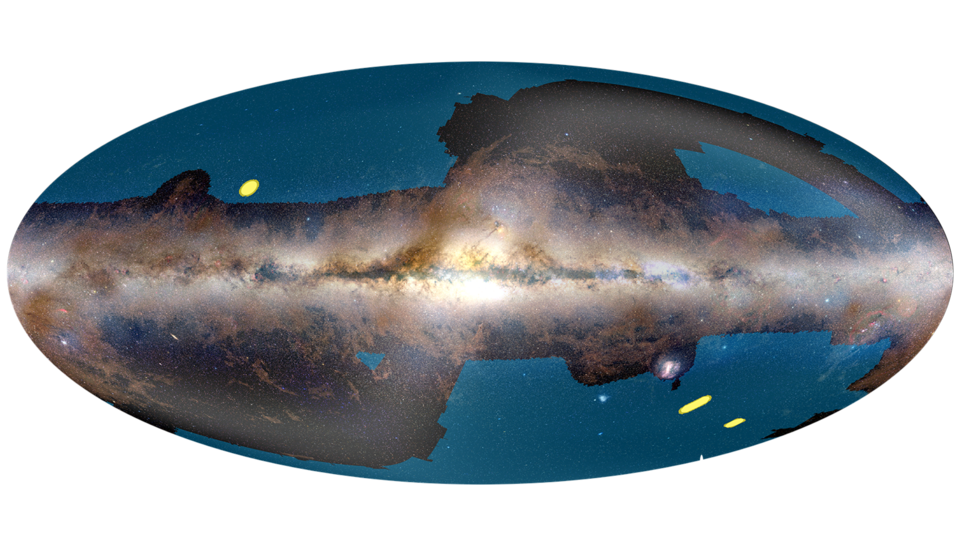Euclid’s treasure trove
Euclid was primarily designed to study the composition and evolution of the Universe at the largest scales. However, Euclid's unprecedented survey will also be a treasure trove of information about the physics of individual stars and galaxies.
Euclid will provide a gigantic catalogue of 1.5 billion galaxies by imaging and comparing the brightness of these galaxies at different wavelengths of visible and near-infrared light. Being sensitive to starlight that has taken ten billion years to reach us, Euclid will look back in time.
Galaxies of all shapes and sizes
For each galaxy in Euclid’s detailed three-dimensional map, we will know its shape, mass, and other properties such as an estimate of how many new stars it produces per year. It has a four times higher resolution, and 15 times better sensitivity in the near-infrared than is possible from current ground-based surveys.
In the ‘nearby’ Universe, out to a distance of around 16 million light-years, Euclid will even be able to see which types of stars each galaxy hosts, and how these stars orbit around their galaxy centre. This will teach us about how different stars and galaxies form.
Although the largest fraction of the Euclid's observations will be devoted to a wide survey, it will spend about ten percent of its time to look at just three patches of the sky. These regions are called the Euclid Deep Fields. By staring at these patches for a long time, Euclid will be able to see objects that are hundreds of times fainter than the ones Gaia can detect. Two of these regions were chosen to overlap with previous ‘deep field’ measurements, while the third has been specially selected for Euclid.

The exclusive instrumental stability and the lack of the disturbing Earth atmosphere give Euclid the ability to study not only the cores of numerous galaxies, but also their fainter haloes and how dark matter affects them. Euclid will detect millions of galaxies that are in the process of colliding or merging, mapping the faint streams of material that is being disrupted. This will provide a detailed survey of how galaxies interact with each other and evolve over cosmic time.
Our galaxy
Euclid will also teach us about how our own galaxy – the Milky Way – formed and evolved. Since 2013, ESA's Gaia mission has been producing a gigantic survey of almost 2 billion stars in the Milky Way. Euclid will augment this survey. Unlike Gaia, Euclid will also observe near-infrared light and will be able to spot the brown dwarfs and ultra-cool stars that Gaia will miss.
In addition to detecting new objects, Euclid will provide complementary information for stars that have already been observed by Gaia. It will measure infrared colours and spectra for these objects. This new information will allow astronomers to calculate the precise age and initial chemical composition of each star. This is crucial for determining the way heavier chemical elements have built up in our galaxy.



